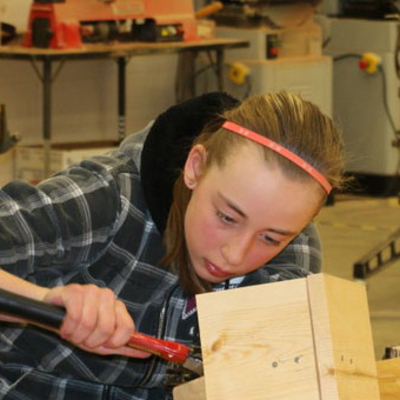Use tools to build a project of your choice and develop skills in shop, metal work and woodworking.
What can you do?
In the industrial technology project, you can:
- Learn skills woodworkers use, such as measuring, squaring and cutting a board, sanding, drilling, and driving nails.
- Create metal structures using metal cutting, bending and assembling processes.
- Repair, finish or refinish a wooden or metal article.
These are just some of the many ways you can participate in this project.
Project information
Get started with 4-H'ers in your area
- Contact your local 4-H office for more info.
Get started on your own
- Begin your project learning with the industrial technology project resource guide.
- Reflect on your project and what you've learned using 4-H record keeping.
Project opportunities near you
Get in touch with your local 4-H office to learn about industrial technology project events and activities in your area.
Interested in getting involved as an industrial technology project volunteer?
Contact your local 4-H office or learn more about volunteering in 4-H.
Fair information
What does it mean to show at the fair?
For 4-H'ers, local and state showcase events (like the Minnesota State Fair) are not just fun events. They provide youth opportunities to exhibit the knowledge and skills they've gained throughout the year– and to continue their learning.
Contact your local 4-H office for industrial technology (shop, metal work and woodworking) project showcase opportunities near you.
Exhibit ideas and judging criteria
Get exhibit ideas and find out what the judge is looking for in the evaluation sheet.
Reviewed in 2023


